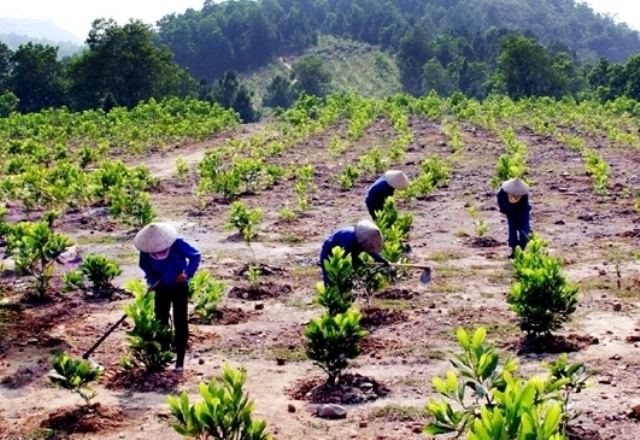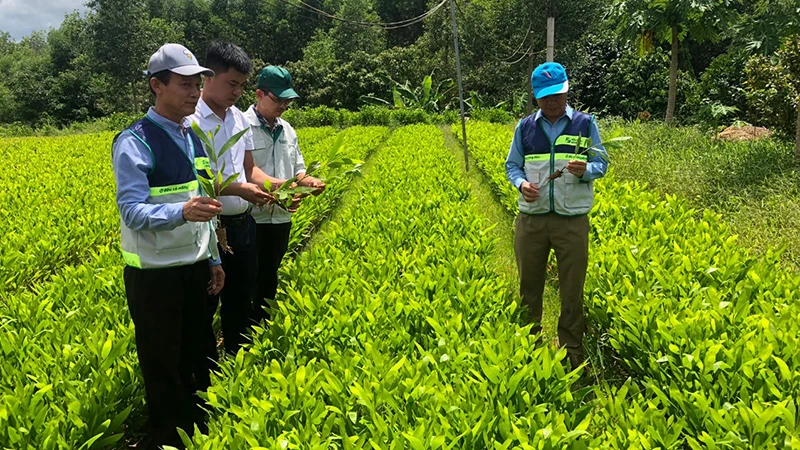Carbon credits are a relatively new concept in the modern economic landscape, especially amidst efforts to minimize human impact on climate change. Acquiring carbon credits not only benefits the environment but also holds significant economic value.
Carbon credits measure the amount of carbon emissions released into the environment due to human activities. Engaging in the buying and selling of carbon credits not only supports the reduction of greenhouse gas emissions but also yields considerable economic benefits. The increasing interest in investing in carbon credits is driven not only by environmental protection goals but also by the promising business potential it brings.

Carbon credits related to forests in Vietnam are subject to regulations and receive substantial support from legal documents, notably:
With the enactment of the Environmental Protection Law 2020, Vietnam has established stringent regulations on the protection and development of natural resources, particularly forests, aiming to absorb and store carbon. This law not only specifies responsibilities for forest conservation but also emphasizes the crucial role of forests in mitigating and responding to climate change. These regulations provide a robust legal foundation to promote forest carbon credit activities.

This decree introduces vital incentives for the development of forest carbon accounting projects and the provision of forest environmental services. It encourages organizations, businesses, households, and local communities with forested land to actively participate in implementing these projects and receive forest carbon credits upon completion. This decree not only creates favorable conditions but also serves as a significant motivation to enhance forest protection and carbon management in Vietnam.
These legal documents collectively underscore Vietnam's strong commitment to environmental protection and the promotion of forest carbon credit activities, contributing significantly to the goal of mitigating the impact of climate change.
There are various ways to obtain carbon credits, ranging from participating in forest protection projects to implementing circular production processes. These methods not only help reduce greenhouse gas emissions but also create opportunities to enter the carbon market, thereby contributing to environmental protection.
Engaging in effective forest protection and management projects helps preserve natural resources and sequester carbon from the environment.

Trading platforms facilitate the buying selling, and exchange of carbon credits according to specific regulations and standards.
Optimizing resource usage, recycling, and energy efficiency can generate carbon credits.
Investing in renewable energy not only reduces energy costs but also generates carbon credits.
Selling carbon credits is a complex process, requiring a solid understanding of the carbon credit market, legal regulations, and customer engagement. Here is a guide on how to sell carbon credits:
Determine the source of carbon credits you possess, such as credits from forest protection projects or renewable energy use.
Evaluate and verify the amount of carbon credits you hold, typically done by certification organizations or independent experts.
Understand the carbon credit market, prices, and trends. Familiarize yourself with trading platforms and transaction rules.

Choose a selling method, whether through main trading platforms, commercial partners, or direct transactions with businesses interested in buying carbon credits.
Work with legal experts to ensure that all transactions comply with legal regulations and have accurate contracts.
Establish a strong brand for your carbon credits to increase brand value. Market to potential customers through various communication channels and community engagement.

Ensure compliance with certification standards and regulations. This may involve maintaining environmental management and annual reporting.
Provide clear information and support to customers to help them understand the value of carbon credits and their positive environmental impact.
Explore opportunities to expand or collaborate with organizations, businesses, or new projects to enhance the supply of carbon credits and create added value.
The price of a carbon credit varies depending on the location and the environment it is traded. In 2019, the average price of one carbon credit was $4.33. By 2020, this figure surged to $5.60 per carbon credit before decreasing to an average of $4.73 per carbon credit in 2021.

Sellers should focus on planting and managing forests and selecting tree species with high carbon storage capabilities on cultivated land. Instead of generating a standard carbon credit per hectare, researching and selecting tree species with greater carbon storage potential can increase the number of carbon credits obtained. This not only contributes to environmental protection by reducing CO2 emissions but also significantly improves profitability for forest owners by selling more credits on the carbon market.

Having more carbon credits from a specific land area not only improves the return on investment but also motivates to implementation of scientific and sustainable forest management practices. This opens up opportunities for collaboration with international partners interested in purchasing carbon credits from emission reduction projects.
Carbon credits not only serve as a means to reduce emissions but also hold economic value. Obtaining these credits is not just an individual responsibility but also an opportunity to participate in environmental protection and business development. By understanding regulations, practical application, and real-world implications, we can contribute to creating a more sustainable and greener living environment.
Website: [https://3dmaster.com.vn](https://3dmaster.com.vn)
Hotline - Zalo - LINE - Telegram - WhatsApp - Viber - Kakaotalk: +84 982 089 198 | 0986333960
Email: cuong3dmaster@gmail.com | hung3dmaster@gmail.com | tech3dmaster@gmail.com